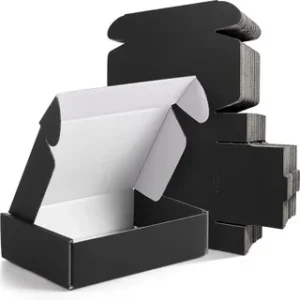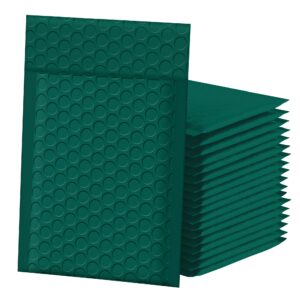How to Adjust Private Hearing Aids for Background Noise Reduction
Background noise can be a significant challenge for individuals using private hearing aids. Whether it’s a busy restaurant, a crowded family gathering, or an open workspace, background noise can interfere with your ability to focus on conversations and sounds you want to hear. Modern hearing aids, however, come with features that can help reduce background noise, enhancing your listening experience.
In this article, we’ll discuss practical strategies for adjusting your Private Hearing Aids for background noise reduction. We’ll also mention Almond Hearing, a reliable resource for professional guidance and expert support to ensure you get the most from your hearing aids.
Understanding Background Noise and Hearing Aid Challenges
Background noise can include a variety of sounds, such as traffic, people talking, music, or machine hums. Hearing aids work to amplify sounds, but they sometimes struggle to differentiate between speech and ambient sounds. This can make it challenging for hearing aid users to follow conversations, especially in noisy environments.
Advances in hearing aid technology have led to the development of features specifically designed to reduce background noise and enhance speech. These include directional microphones, noise-reduction algorithms, and customizable settings, all of which help users enjoy clearer sound in different environments.
Key Features for Reducing Background Noise in Hearing Aids
When selecting and adjusting your hearing aids for background noise reduction, consider the following features that can help filter out unwanted sounds:
- Directional Microphones: Most modern hearing aids are equipped with directional microphones that focus on sounds in front of you while minimizing sounds from other directions. In a noisy environment, these microphones can help prioritize speech over background noise, allowing you to concentrate on conversations.
- Digital Noise Reduction (DNR): Many hearing aids include a Digital Noise Reduction (DNR) feature that identifies and minimizes unwanted sounds. DNR technology helps reduce continuous background noises, such as the hum of an air conditioner, without affecting speech clarity.
- Wind Noise Reduction: For outdoor environments, wind noise reduction is a valuable feature that decreases wind interference, making it easier to hear voices or other desired sounds even when outside.
- Adaptive Noise Reduction: This feature automatically adjusts noise-reduction settings based on the listening environment. Adaptive noise reduction technology continuously monitors background noise and makes real-time adjustments, providing a seamless listening experience.
- Bluetooth Connectivity and Apps: Many private hearing aids can connect to smartphone apps that let you adjust settings like volume and noise reduction. These apps provide a convenient way to make on-the-go adjustments based on your environment, without needing to visit a hearing specialist.
Adjusting Hearing Aid Settings for Different Environments
Adjusting your hearing aids for various environments is essential to reducing background noise effectively. Here are some tips for configuring your hearing aids to perform optimally in different situations:
- Restaurants and Social Gatherings: In social settings with substantial background noise, such as a restaurant, use directional microphones to focus on the person you’re speaking with. Setting the hearing aids to prioritize sounds in front of you helps reduce distracting sounds from the sides and behind.
- Outdoor Areas: If you’re outside, enabling wind noise reduction can significantly improve sound clarity by minimizing wind interference. Additionally, reducing the overall sensitivity of your hearing aids may help to minimize unwanted ambient sounds.
- Public Spaces (Offices, Theaters, and Events): Public spaces often have various sound sources, including machinery or crowd noise. Adjusting the noise reduction and directional microphone settings can help you focus on specific conversations, and turning on the Digital Noise Reduction feature can further suppress persistent background noise.
- Home Environment: At home, where background noise levels are typically lower, you can adjust your hearing aids to allow more natural sound, maintaining awareness of ambient sounds while focusing on conversations and other important sounds.
Consulting Professionals for Personalized Adjustments
While many hearing aids allow you to make basic adjustments, consulting a hearing care professional can optimize your experience and ensure the best sound quality. Professional guidance can help you select the right settings for different environments and ensure your device performs optimally.
Almond Hearing is an excellent resource for those seeking personalized hearing aid adjustments. Their team of professionals can help configure your hearing aids to suit your lifestyle and specific listening needs, ensuring that background noise is minimized in challenging environments.
Using Private Hearing Tests to Optimize Background Noise Reduction
Regular Private Hearing Tests can help monitor changes in your hearing, which may require adjustments in your hearing aid settings for optimal noise reduction. These tests, conducted by a hearing care professional, assess your hearing sensitivity and identify areas where your hearing aids may need fine-tuning.
Private hearing tests are crucial for detecting subtle changes in your hearing and ensuring your hearing aids are effectively set to meet your current needs. Through testing, professionals can determine if additional adjustments or feature activations are necessary to minimize background noise, especially in more challenging environments. Almond Hearing provides comprehensive private hearing tests and expert consultations to help you achieve the best possible listening experience with your hearing aids.
Tips for Adjusting Your Private Hearing Aids Independently
Many private hearing aids come with smartphone apps or onboard controls that allow you to adjust settings as needed. Here’s how you can manage settings to improve background noise reduction:
- Utilize the Companion App: If your hearing aids are compatible with a mobile app, use it to adjust the volume, activate noise reduction, or switch to different sound profiles. Apps provide a convenient way to fine-tune your device settings based on your immediate environment.
- Try Different Listening Programs: Many hearing aids come with preset listening programs for different environments, such as “restaurant,” “outdoor,” or “home.” Experimenting with these programs can help you find the best settings for each environment.
- Adjust Volume and Sensitivity: In very noisy environments, reducing the volume or sensitivity can sometimes help minimize the distraction caused by background sounds. This can be especially helpful in situations where the noise is overpowering, such as large crowds.
- Test Various Noise-Reduction Levels: Your hearing aids may allow you to adjust the level of noise reduction. For crowded or noisy spaces, setting noise reduction to a higher level can help you focus on speech, while a lower level might be better for quieter settings.
The Benefits of Regular Maintenance for Noise Reduction
Consistent maintenance can also impact how well your hearing aids handle background noise. Here are some maintenance tips to ensure your devices are performing optimally:
- Clean Microphones and Receivers: Dust and earwax can clog the microphone and receiver, impacting sound quality and noise reduction performance. Clean these components with a soft brush or cloth regularly to maintain clarity.
- Replace Wax Guards and Filters: Wax guards and filters protect your hearing aids from buildup but need periodic replacement. Clean filters ensure that your device operates without interference, helping reduce noise for a clearer sound.
- Check Battery Health: Low battery levels can affect the functionality of noise reduction features, so it’s essential to keep your hearing aids charged or replace disposable batteries as needed.
Routine professional maintenance can further enhance your device’s ability to manage background noise. Almond Hearing offers maintenance services and support to help keep your hearing aids in top condition.
Consulting Almond Hearing for Personalized Noise Reduction Solutions
Every hearing aid user has unique needs, and finding the best settings for noise reduction often requires personalized adjustments. Almond Hearing provides specialized services, including individual assessments and consultations, to help you customize your hearing aids to achieve the best possible listening experience.
Their team can guide you through adjusting your device settings, choosing appropriate listening programs, and selecting noise-reduction features that suit your daily environments. By consulting Almond Hearing, you’ll receive tailored advice on how to handle specific noise challenges and enjoy clear communication in a variety of settings.
Common Mistakes to Avoid with Noise Reduction
While adjusting your hearing aids for noise reduction, it’s important to avoid common mistakes that may impact your listening experience:
- Over-relying on Noise Reduction: While noise reduction helps in challenging environments, relying on it too much can result in missing ambient sounds that are important for awareness, such as traffic noises.
- Ignoring Regular Checkups: Failing to schedule regular maintenance or private hearing tests can result in suboptimal settings. Routine checkups ensure your hearing aids remain in peak condition.
- Using Maximum Volume: Increasing volume to overcome noise is not always the best approach. Instead, adjust your noise-reduction settings or consult a hearing specialist for fine-tuning.
Conclusion
Adjusting your private hearing aids for background noise reduction can dramatically improve your listening experience, enabling you to hear speech and essential sounds more clearly. By understanding and utilizing the features available on your device—like directional microphones, Digital Noise Reduction, and companion apps—you can make on-the-go adjustments suited to different environments.
Regular maintenance, personalized adjustments, and professional guidance all play essential roles in achieving optimal noise reduction. Almond Hearing offers trusted expertise and comprehensive services, from private hearing tests to device adjustments, ensuring your hearing aids perform at their best in various noise settings. With the right adjustments and professional support, you’ll enjoy clearer, more focused listening every day.














Post Comment